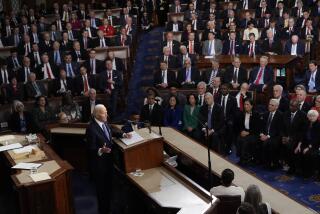California bouncing back after a slow start to 2014, report says

The economic recovery in California struggled through the first half of the year but now is picking up speed, driven by improvements in the real estate and the job markets, according to a quarterly report from Beacon Economics and City National Bank.
The state’s economic output swelled at an estimated 4% annual rate in the second quarter, a sharp turnaround from the first quarter’s dismal minus-2.5% rate.
Researchers pegged California’s total gross state product -- the value of all goods and services produced in the state -- at $2.1 trillion, or 13.1% of the overall U.S. economy. That would make it the 10th-largest economy worldwide.
The real estate industry was a major factor in the reversal. On the commercial side, growing companies were hunting for more space. On the residential side, prices continued to rise as existing home sales in California increased 6.9% in the second quarter from the first quarter, according to the report. Prices now are rising more slowly, and volume remains lower than last year.
Even so, economists warned that California’s still high cost of living could affect employment down the line.
“Businesses will be hard-pressed to recruit mid-skilled workers in a state where the median price of a house is well over twice the national average,” said Beacon founding partner Christopher Thornberg.
California accounted for 14.2% of the nation’s net employment increase in the second quarter, with businesses adding 109,800 positions to payrolls. The state was second only to Texas, which saw a surge of 126,200 jobs, and vastly outpaced Florida, where 63,400 new jobs were added.
About 70% of payroll expansion in California stemmed from three sectors: the education and healthcare segment, the professional and business area, and the leisure and hospitality sector, according to researchers.
The primary laggard was the finance and insurance industry, which trimmed payrolls 4.7% as major banks scaled down their mortgage banking units amid a decline in refinancing activity.
The Inland Empire was a major contributor to employment growth in the second quarter, researchers said. The region, which consists of Riverside and San Bernardino counties, accounted for 12,600 net new jobs, or 11.5% of the net job gains in the state.
Economists attributed the upswing to the area’s faster-paced increase in population. Since 1970, the annual average rate of population growth has been about 3%, or more than twice the statewide rate. That has attracted major employers, such as Kaiser Permanente in Riverside.
In the meantime, housing in the Inland Empire remains relatively affordable. In the second quarter, the median price for an existing home was $267,224, compared with a median price of $468,658 in Los Angeles County and a median price of $631,429 in Orange County.
Beacon and City National predicted that the California economy will outpace U.S. expansion, swelling 3.5% in the second half of the year compared with 3% nationally.
California ended the second quarter with a 7.4% unemployment rate -- still higher than the national rate of 6.2% but falling at a faster clip, researchers said. By the end of this year, economists expect the state’s unemployment rate to drop to 7%.
Twitter: @tiffhsulatimes







